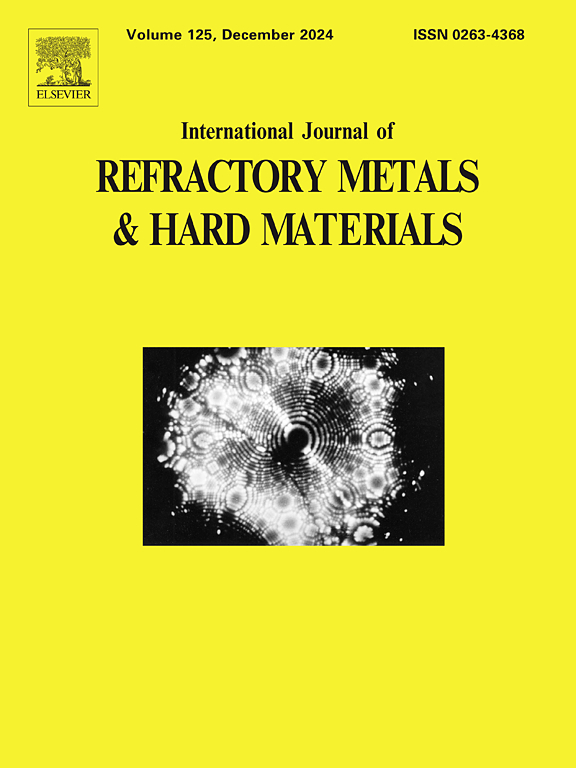Effect of oscillation frequency on microstructure and properties of WC-Co cemented carbide prepared by hot oscillating pressing
IF 4.2
2区 材料科学
Q2 MATERIALS SCIENCE, MULTIDISCIPLINARY
International Journal of Refractory Metals & Hard Materials
Pub Date : 2024-10-13
DOI:10.1016/j.ijrmhm.2024.106922
引用次数: 0
Abstract
In this study, a novel hot oscillating pressing (HOP) was used to prepared WC-Co cemented carbides under various oscillation frequencies. The effects of sintering frequencies on the density, microstructure, and mechanical properties of cemented carbides were systematically investigated. The results show that applying a specific oscillation frequency during the sintering process can greatly aid in the densification process, improve the uniformity of microstructure, help the grain refinement, and prevent the formation of abnormally large WC grains. The mechanical properties of the alloys showed a noticeable improvement as the oscillation frequency increased. The hardness and fracture toughness of cemented carbides were not significantly improved when the oscillation frequency was ≥5 Hz, with the optimal values reaching 1913 kg/m2 and 13.11 MPa.m1/2, in turn. The improvement in mechanical properties of cemented carbide can be mainly attributed to higher density, grain refinement, microstructure uniformity and the increase of dislocation/twins caused by plastic deformation.
摆动频率对热摆动冲压制备的 WC-Co 硬质合金微观结构和性能的影响
本研究采用新型热振荡压制(HOP)技术,在不同振荡频率下制备了 WC-Co 硬质合金。系统研究了烧结频率对硬质合金密度、微观结构和机械性能的影响。结果表明,在烧结过程中采用特定的振荡频率可以极大地促进致密化过程,改善微观结构的均匀性,有助于晶粒细化,并防止形成异常大的 WC 晶粒。随着振荡频率的增加,合金的机械性能有了明显改善。当振荡频率≥5 Hz 时,硬质合金的硬度和断裂韧性没有明显改善,最佳值分别为 1913 kg/m2 和 13.11 MPa.m1/2。硬质合金机械性能的改善主要归因于密度提高、晶粒细化、微结构均匀以及塑性变形引起的位错/孪晶增加。
本文章由计算机程序翻译,如有差异,请以英文原文为准。
求助全文
约1分钟内获得全文
求助全文
来源期刊
CiteScore
7.00
自引率
13.90%
发文量
236
审稿时长
35 days
期刊介绍:
The International Journal of Refractory Metals and Hard Materials (IJRMHM) publishes original research articles concerned with all aspects of refractory metals and hard materials. Refractory metals are defined as metals with melting points higher than 1800 °C. These are tungsten, molybdenum, chromium, tantalum, niobium, hafnium, and rhenium, as well as many compounds and alloys based thereupon. Hard materials that are included in the scope of this journal are defined as materials with hardness values higher than 1000 kg/mm2, primarily intended for applications as manufacturing tools or wear resistant components in mechanical systems. Thus they encompass carbides, nitrides and borides of metals, and related compounds. A special focus of this journal is put on the family of hardmetals, which is also known as cemented tungsten carbide, and cermets which are based on titanium carbide and carbonitrides with or without a metal binder. Ceramics and superhard materials including diamond and cubic boron nitride may also be accepted provided the subject material is presented as hard materials as defined above.

 求助内容:
求助内容: 应助结果提醒方式:
应助结果提醒方式:


